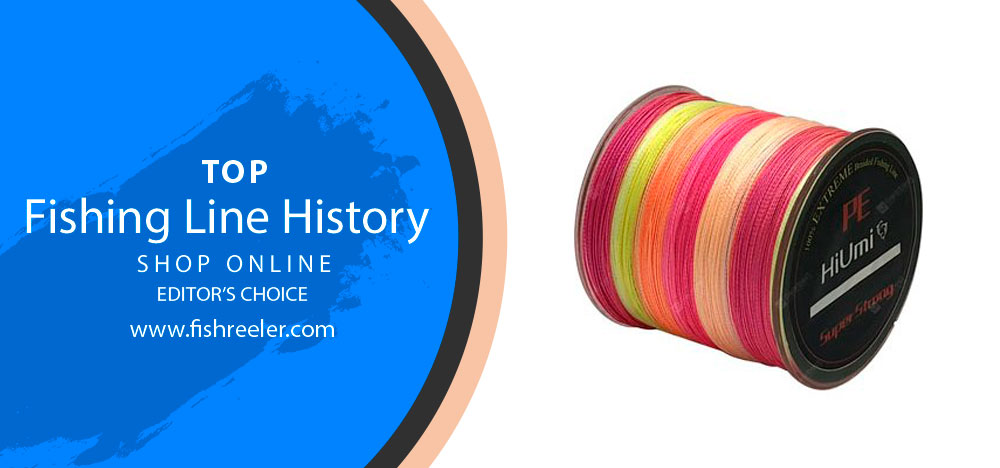
Hooked on History: The Incredible Story of Fishing Lines
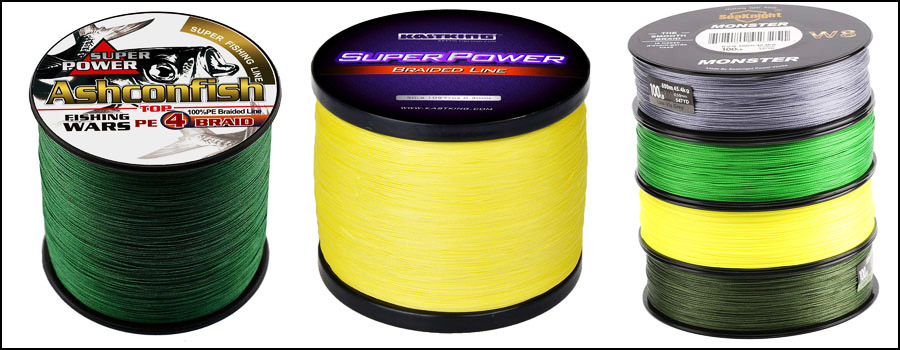
🎣 Casting Off: A Personal Journey into Fishing and Its Evolution
Hello, fellow anglers! 🖐️ If you’re reading this, chances are you, like me, have a deep-seated love for fishing. Ever since I was a child, reeling in my first tiny trout with my father, I’ve been hooked. It’s not just the thrill of the catch or the calm of nature, it’s the precision and the craft. The tools we hold in our hands represent a legacy passed down through countless generations.
🧵 But have you ever stopped to consider the humble fishing line in all this? It might seem like just a piece of string, but it’s the critical connection between us and the aquatic world, a silent player in every triumphant catch. It’s easy to overlook, especially when faced with more glamorous gear like rods, reels, and lures.
📜 This often-underestimated tool has a rich and intricate history, one that echoes human innovation and our enduring relationship with nature. In this article, we’ll delve into the fascinating evolution of fishing lines – from the simple, early twines to the high-tech threads we use today.
Stay tuned and prepare for a deep dive into history, technology, and fishing, all bound together by the thread of human curiosity and ingenuity. 🎣🌊🔍
🎦Video YouTube History of Fishing
🌅 In the Beginning: Early Man’s First Forays into Fishing
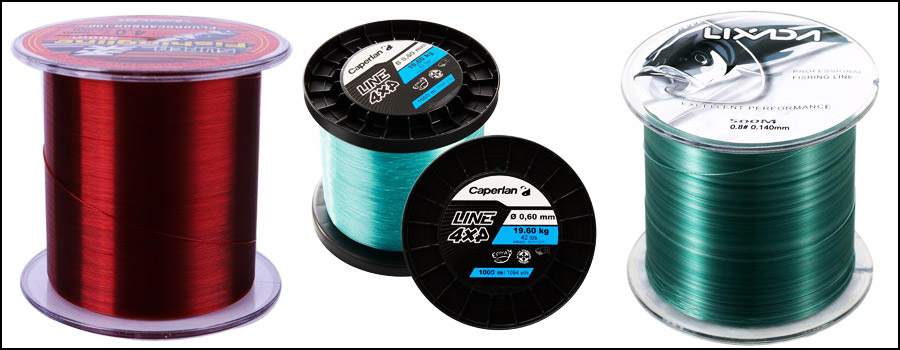
Venturing back to the dawn of civilization, fishing emerged as one of the core survival skills. Early human societies, nestled along riverbanks and coastlines, found in fishing a reliable means of nourishment. 🐟🍴🔥
🔍 Let’s consider the first known fishing lines. They were straightforward, yet brilliant in their simplicity. Using natural resources available to them, our ancestors created functional fishing lines from plant stems or animal material. This was a time when necessity truly was the mother of invention.
👣 Stepping Into Our Ancestors Footprints
To truly understand the dawn of fishing, let’s dissect the elements of the first fishing lines:
| Aspect | Details | Explanation |
|---|---|---|
| Materials | Vines, plant stems, rawhide, sinew | Early fishing lines were fashioned from materials readily available in the environment. In warmer climates, this included vines and plant stems, while in colder regions, sinew or other animal material was used. |
| Craftsmanship | Knot tying | The art of knot tying was a crucial skill in early fishing. The fishing line had to be durable enough to hold the weight of a catch, yet supple enough to not frighten fish away. |
| Hooks | Bone or wood | The earliest hooks were likely made from bone or wood. These were shaped and sharpened to effectively secure the fish once caught. |
| Usage | Close-to-shore fishing from jetties, boats, or riverbanks | Early fishing was primarily a close-to-shore activity. It served as a major source of food and fostered a sense of community, as fishing often involved collective efforts. |
So, the next time you cast your line, take a moment to appreciate its humble origins. The connection you’re making with the water beneath goes back thousands of years, a testament to our species’ ingenuity and resilience. 🌍⏳🎣
🏛️ Reeling Through Time: Ancient Innovations in Fishing Lines

As human civilization evolved, so did our fishing poles, techniques and the tools we used. Two standout civilizations that significantly advanced the art of fishing were the Egyptians and the Romans. 🌍🎣⏳
🏺 The Egyptian Innovation
Renowned for their impressive contributions to art, architecture, and society, the ancient Egyptians also made significant strides in the world of fishing. Settled along the Nile, they had abundant access to a variety of fish. 🐟🏞️
Instead of the primitive plant and animal materials used previously, they began to create fishing lines from linen, which was both more durable and flexible. Not only did this improve their fishing efficiency, but it also allowed for more elaborate fishing techniques.
The Egyptians also advanced the design of hooks. They introduced the concept of barbed hooks, making it much harder for the fish to escape once caught. These early innovations still influence modern fishing techniques today.
🏛️ The Roman Contribution
The Romans, known for their engineering marvels, were no less innovative when it came to fishing. They continued the use of linen and also began to use silk lines, prized for their strength and lightness. 🕸️🎣
The Romans also made major advancements in hook technology. They started creating hooks from metals like bronze and iron, which were much stronger than bone or wood. These metal hooks, paired with the silk or linen lines, gave Roman fishermen a significant advantage.
These advancements from antiquity not only revolutionized fishing in their respective eras but also laid the groundwork for future developments in the fishing industry. They demonstrated the timeless human spirit of innovation and our ongoing relationship with the world around us. 🌊🌍🔄
🏰 Unraveling the Past: Medieval and Renaissance Advances in Angling
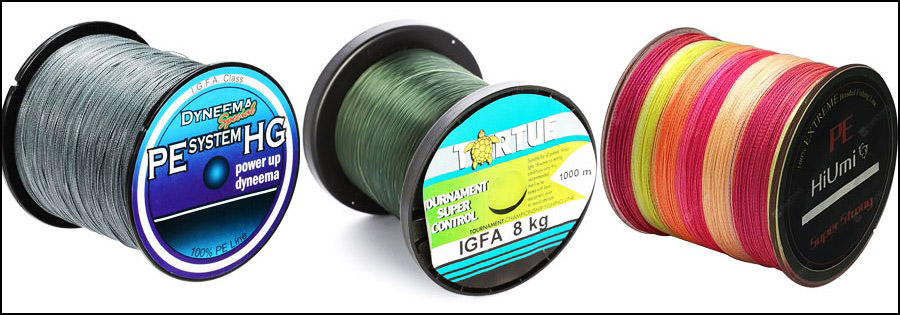
As we move further along the timeline of human history, we witness the continued evolution of fishing lines during the Middle Ages and the Renaissance. These periods were marked by important societal changes and technological breakthroughs, influencing many areas of life, including the art of fishing. 🎣⌛🌍
🛡️ Medieval Mastery
During the Middle Ages, the practice of fishing was elevated from a survival necessity to a leisure activity, particularly among the nobility. This shift in societal role prompted advancements in fishing line technology. 🏞️🏰
Materials like horsehair became popular for making lines. Horsehair lines, often braided for strength, were resilient and relatively easy to produce. The development of better dyes during this period also meant that fishing lines could be colored, making them less visible in the water.
🎨 Renaissance Revolution
The Renaissance, a period of immense cultural and scientific flowering, also saw significant strides in fishing technology. The art of fishing began to be studied more scientifically, leading to improvements in both equipment and techniques. 📜🔭
During this period, fishing lines began to be made from new materials, like flax, that offered even greater strength and versatility. Hooks became more refined and diverse in their design, catering to different types of fish and fishing conditions.
The development of the printing press also played an unexpected role in fishing. The first known fishing manual, “The Treatise of Fishing with an Angle,” was printed in 1496. It not only offered advice on where to find certain fish and what bait to use but also gave detailed instructions on how to make your own fishing line. 📖🎣
The Middle Ages and Renaissance were instrumental in turning fishing into the sport we know today. The advancements made during these eras set the stage for the more sophisticated developments that were to follow. 💡🔄🌍
A Brief History of the Evolution of Fishing Lines
Early Development
For centuries people fished using lines made of animal or plant material that was strong enough to hold and pull the fish out. In a British book written in 1496, it was mentioned that fishing was carried out using a line of braided horsehair. Then another book in 1667 mentions that fishermen built their own gear from a wire loop that was attached to a pole. People continued to experiment with different types of fishing lines until the invention of synthetic materials.
Industrial Development
Fishing has benefited greatly from the advent of machines. Since 1850 fishing lines had been produced in large quantities in specialized factories. Most of these early production lines were made from silk or linen and less often from linen or cotton.
Some fishing lines even had a water-resistant compound added to them during production. When DuPont announced in 1938 that the company had invented a revolutionary new material called nylon, the world was horrified.
This was the first synthetic fiber that was ever produced and everyone saw what a huge potential it could have in the production of textiles. The following year DuPont himself went even further starting to produce nylon monofilaments.
However, Dacron braided fishing lines remained the most popular brand for the next two decades. But DuPont was not a simple company. They knew that the monofilament was an original design that different anglers could benefit from.
In 1959 DuPont captured the market by introducing the stern, a thinner monolinear fishing line suitable for a wide range of reels, for old and recently introduced spinning and casting gear. Thanks to its flexibility and ease of use, the stern monofilament soon became a favorite choice for both beginners and experienced anglers.
🏭 Reeling in Progress: The Industrial Revolution’s Impact on Fishing

As we steam ahead to the Industrial Revolution, we witness another significant leap in the history of fishing lines. This era, marked by rapid technological advancements and mass production, revolutionized fishing like never before. 🎣⚙️🌍
🛤️ Riding the Wave of Industrialization
During the Industrial Revolution, many elements of daily life were transformed, including fishing. The advent of machinery and new manufacturing processes ushered in the era of mass-produced fishing lines. 🏭💡
Previously, fishing lines were painstakingly crafted by hand, which limited their availability and increased their cost. With industrialization, production became faster, cheaper, and more consistent. This meant that fishing lines, and fishing as a hobby, became accessible to a larger portion of the population.
🎣 The Material Revolution
A significant factor in this transformation was the change in materials. In the mid-19th century, the development of synthetic materials like nylon dramatically improved the quality and durability of fishing lines. 🧪🧵
Nylon, being strong, flexible, and resistant to rot, quickly became the material of choice for fishing lines. It was less visible in water than its predecessors and more resistant to wear and tear, making it a game-changer in the world of fishing.
The industrial revolution, with its advanced production methods and introduction of synthetic materials, marked a major milestone in the history of fishing lines. It turned fishing into a more accessible and efficient pastime, forever changing our relationship with this ancient practice. 🔄🌊🌍
🎣 Tangled in Today: The Science Behind Modern Fishing Lines

In the current era, the art of fishing has been transformed by science and technology. Today’s fishing lines are a product of extensive research, material science, and sophisticated manufacturing processes. Let’s dive deeper into the world of modern fishing lines and the types that dominate the market. 🧪⚙️🌊
🧵 🎣 Getting Started: The Versatility of Monofilament Fishing Lines 🌈🎣

If you’re new to the world of fishing, chances are, your journey will begin with a specific kind of fishing line. This fishing line is none other than the Monofilament, affectionately referred to as ‘Mono‘. Due to its ease of use and multifunctional qualities, it has become the go-to choice for fishermen across the globe. 🌍🎣💡
Constructed from nylon, a material brought to life by an innovative American company in the mid-1930s, Mono has the perfect balance of affordability and durability. It boasts a wide array of thicknesses and colors, suiting a variety of fishing environments and preferences. Its rigid yet elastic nature allows for effortless casting, reducing the headaches caused by line entanglements. Thanks to its elasticity, Mono can withstand considerable pressure, making it a reliable companion on your fishing trips. 💪⏳🎣
Proper storage is crucial for maintaining the pristine quality of Mono lines. Keep them shielded from UV rays and excessively dry air, and these lines will preserve their original properties without compromising on performance. Whether you’re rigging the main line or the leader material, Mono is a versatile choice. 🛡️☀️💦
What sets Mono apart is its admirable performance under a range of temperature variations. It stands up to the test of time, maintaining its characteristics across seasons. Whether it’s the scorching summer or the freezing winter, Mono never disappoints. Moreover, due to nylon’s dye-friendly nature, Mono lines come in a spectrum of colors. The color you choose can be a strategic decision, influenced by factors like weather conditions and the type of fish you’re after. 🌈🌡️🐠
So, as you set sail on your fishing journey, trust in the reliability and versatility of Mono lines. They’re not just a tool but a rite of passage for every angler, offering a taste of the vast world of fishing in one simple, effective line. 🎣🚀💙
🎣 Weighing the Pros and Cons: An In-Depth Look at Monofilament Lines
In the grand tapestry of fishing, monofilament lines hold a special place. Known for their accessibility and simplicity, they are often the first choice for budding anglers. Here’s why:
In the world of fishing, the equipment you choose becomes an extension of your passion and skill. By weighing the pros and cons of Mono lines, you can make an informed decision that enhances your fishing journey. 🎣🌟💼
🔬 🎣 Fluorocarbon Lines: The Invisible Warrior of Fishing Gear
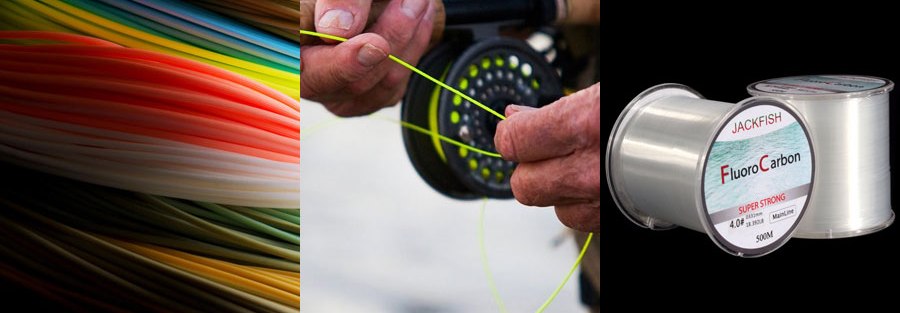
Fluorocarbon lines are a newer entry into the fishing world. They’re made from a compound called PVDF (Polyvinylidene Fluoride), which has a refractive index close to that of water. This makes fluorocarbon lines virtually invisible underwater, a major advantage when targeting skittish fish. Fluorocarbon lines also have excellent abrasion resistance and don’t absorb water, ensuring their strength and diameter remain consistent. 💧👓🎣
🔬 The Science behind Fluorocarbon Lines: Fluorocarbon lines display an impressive degree of transparency and can resist the onslaught of harsh chemicals and extreme physical conditions. They are resilient in both sub-zero and high-temperature situations. But that’s not all. Fluorocarbon lines are also UV-resistant, making them a durable choice without the need for special storage precautions. These lines can retain their quality for years on end.
🐠 Fishing with Fluorocarbon Lines: Stealth Mode: Fluorocarbon lines are hard to spot due to their transparent nature, which makes them excellent for catching wary or skittish fish.
Perfect Harmony: Thanks to their light-refractive properties similar to water, these lines blend seamlessly into the aquatic environment.
Heightened Sensitivity: Fluorocarbon lines can help detect the faintest nibble, ensuring that you never miss an opportunity for a catch.
💪 Durability and Utility: Compared to monofilament lines, fluorocarbon stands out with its superior durability and resistance to abrasion. Furthermore, their UV-resistance adds to their longevity. If you’re an angler who prefers the open sea, fluorocarbon is your trusty ally, thanks to its suitability for saltwater.
💰 The Investment: Fluorocarbon lines, while more expensive than monofilament, deliver a level of performance that justifies the investment. Its stiffness can be a con for some, but it’s a small price to pay for the advantages on offer.
🏢 Commercial Availability: Fluorocarbon lines can be purchased in pre-measured reels or in smaller lengths wound up on a bobbin, depending on your needs.
In the vast ocean of fishing gear, fluorocarbon lines have earned their place as a favored leader material and a reliable shock leader. They continue to serve as a testament to the evolution of fishing technology. 🎣🔬💼
🎣 Fluorocarbon Lines: Weighing the Pros and Cons
When selecting the perfect fishing gear, every angler must consider the benefits and drawbacks associated with each choice. Let’s delve into the attributes of fluorocarbon lines.
In summary, fluorocarbon lines offer an impressive suite of strengths that make them an attractive choice for seasoned anglers. Even though they might be a little pricey, their performance and longevity offer excellent value for money in the long run. 🎣🌞🌡️
🧶 🎣 Braided Lines: Delving into the Details

Braided lines, made from weaving together multiple strands of a synthetic material like Spectra or Dyneema, boast a high strength-to-diameter ratio. This means you can fit more line on your reel without sacrificing strength. Braided lines have virtually no stretch, providing greater sensitivity to bites and ensuring a solid hook set. However, their visibility in water can sometimes be a disadvantage. 👀💪🎣
The evolution of fishing lines showcases a beautiful blend of tradition and technology. Whether you choose monofilament, fluorocarbon, or braided lines, it’s clear that these modern marvels are the result of centuries of innovation and a deep-seated human connection to the art of fishing. 🌍⏳🔄
🏋️♂️Braided Line Strengths:
- High Strength, Slim Profile: Braids set themselves apart by offering exceptional strength at low thicknesses.
- Supreme Sensitivity: Owing to the material’s low stretch factor, braided lines enable the creation of highly responsive tackle that picks up even the slightest of bites and facilitates the precise control of lure movement.
- Price vs. Performance: While priced higher than monofilament lines, the cost of braided lines is justified by their high performance and durability.
- Sharp and Slick: The sharpness of braided lines allows them to cut through aquatic plants that may obstruct the line during casting or reeling.
- Waterproof and Abrasion Resistant: These lines are resistant to water absorption and exhibit impressive resistance to wear and tear.
❄️ Challenges with Braided Lines:
- Prone to Tangling: Braids may have a tendency to tangle, and due to the constant friction, they can become fuzzy and degrade over time.
- Visibility: A downside to braided lines is their high visibility in the water, which could potentially alert fish to their presence.
- Performance in Cold Conditions: At low temperatures, these lines can absorb water and freeze, leading to a loss in performance.
Overall, braided lines are a great choice for spinning techniques, like twitching and jigging, that demand meticulous control over bait movement. They also serve as a robust choice for long-distance bottom setups. Though they may have a few drawbacks, the unique strengths of braided lines make them a popular choice among modern-day anglers. 🎣🌊🌡️
💪 Braided Lines: Benefits and Potential Drawbacks
Just as with any fishing line, braided lines come with their unique strengths and challenges. By understanding these, you can make an informed choice to suit your specific angling needs. 🎣🤔👍
🚀 Casting Into the Future: Innovations in Fishing Lines on the Horizon

As we reel in our understanding of the past and present of fishing lines, it’s time to cast our sights into the future. In this ever-evolving field, what might the fishing lines of tomorrow look like? Let’s venture some educated predictions and ponder the possibilities that lie ahead. 🎣🔮🌍
🧪 The Material Science Evolution
Advancements in material science will undoubtedly play a significant role in shaping the future of fishing lines. We might soon see lines made from graphene, a super-strong and ultra-light material that is hundreds of times stronger than steel and excellent at conducting heat and electricity. Imagine a fishing line that could signal a bite electrically! ⚡💡
Biodegradable fishing lines could also become mainstream, reducing the environmental impact of lost or discarded fishing gear. Made from materials like chitosan, derived from shrimp and other crustacean shells, these lines could maintain the strength and flexibility of current lines but decompose naturally over time. 🦐🌱
🤖 Tech-Infused Tackles
Technology will also play an essential part in the future of fishing. We may see smart fishing lines equipped with micro-sensors to provide real-time data about water temperature, depth, and fish movement. This data could be transmitted directly to your smartphone, providing invaluable insight to improve your fishing game. 📲🎣
Artificial intelligence could also make its way into our fishing gear. AI-powered systems could analyze the data collected by smart lines, learning and adapting to different fishing environments to maximize success. 🧠🔍
The future of fishing lines is exciting and full of possibilities. As we look ahead, it’s clear that our journey in perfecting this age-old tool is far from over. As long as there are fish to catch and stories to tell, we’ll continue to innovate and evolve our craft. The future, as they say, is on the line. 🌊🌍🔄
🎣 Tying the Knot: A Fisher’s Reflections on the Evolution of Fishing Lines

From simple, handcrafted lines to cutting-edge, technology-driven threads, the journey of fishing lines has indeed been a fascinating one. As an avid angler, I find this evolution deeply stirring and inspiring. Here are my personal insights on how this evolution has fuelled my passion for fishing. 💭🌊
🔄 From Tradition to Innovation
Growing up with a fishing rod in my hand, I’ve seen firsthand how different types of fishing lines can change the game. From my first catch on a simple monofilament line to the thrill of using a fluorocarbon line’s near-invisibility to my advantage, every innovation has added a new dimension to my fishing adventures.🎣💡
What strikes me most is the ingenious combination of human curiosity, ingenuity, and a deep love for nature inherent in every stride we’ve made in fishing line technology. Each improvement, each material used, and each design choice reflects our unyielding quest to harmonize with nature and respect the water’s inhabitants while indulging in our primal instinct to fish.🌿🐠
🧡 The Line That Binds Us
The fishing line, in essence, is not just a tool, but a symbol of the timeless bond between humans and the water. It’s a testament to our ability to adapt, innovate and appreciate the beauty of nature in its rawest form. It’s the unseen thread that connects us to the aquatic world and the lifeline that brings us closer to our ancient roots. 🌍💫
Reflecting on the past, embracing the present, and anticipating the future of fishing lines, I feel an overwhelming sense of respect and gratitude. My love for fishing is not just about the thrill of the catch. It’s about understanding and appreciating the journey of the humble fishing line – from crude twines to sophisticated threads.🔄⏳🌊
So, here’s to the past, present, and future of fishing lines. Here’s to the human spirit of ingenuity and our timeless love for the art of fishing. Here’s to every fisherman and fisherwoman whose passion continually drives this evolution. Here’s to the stories our lines have told and the ones they are yet to tell. 🎣💙🚀
❓🎣 FAQ: History of Fishing Lines
Have more questions about the history of fishing lines? Feel free to drop your queries in the comments section below! 💡💬👇
🎣 Reeling in the Memories: A Look Back at the Journey of Fishing Lines
As we cast our lines back in time, we’ve seen how the humble fishing line has evolved from primitive twines to the sophisticated tools of the trade we have today. This voyage is not just about innovation or fishing, but a reflection of our shared human experience and innate love for nature. 🔄💡🌊
⏳ From Simplicity to Sophistication
Our journey began in the hands of early humans, crafting crude lines from natural materials like vines, plant stems, or rawhide. As civilizations rose and fell, fishing lines continued to evolve, with each era adding a unique thread to this incredible tapestry. Ancient Egyptians and Romans introduced new materials and technologies, improving upon what was available. 🏺⚔️🎣
The Middle Ages and Renaissance saw further improvements, fueled by societal changes and technological advancements. But it was the Industrial Revolution that truly transformed the landscape, with the introduction of mass-produced lines and groundbreaking changes in materials and manufacturing methods. 💼⚙️🔩
Our modern age has taken fishing lines to new depths, with the development of monofilament, fluorocarbon, and braided lines. Thanks to science, technology, and relentless human innovation, today’s anglers have an impressive arsenal at their disposal.🔬💻🎣
🌍 An Ongoing Journey
Despite these advancements, our journey isn’t over. We are already looking ahead to the future, speculating on possibilities such as graphene lines, biodegradable options, and even smart lines that could revolutionize the sport. The horizon is ripe with promise, and I can’t wait to see what we’ll reel in next! 🚀💡🎣
🔄 Lines of Connection
So, the next time you cast your line, take a moment to appreciate the rich history and the countless stories behind this simple tool. Remember the ancient humans who stood on the banks of a river with a rudimentary twine, the innovators who envisioned more efficient designs, the engineers who made it possible, and the countless anglers who have passed down their knowledge from generation to generation. 🎣👥🔄
Our fishing lines connect us not only to the fish we seek but to our past, our future, and to each other. This is the real beauty of fishing – a thread of connection, spun through time, bridging the gap between us and the natural world. Here’s to the humble fishing line – an unassuming tool with a story as rich as the seas it explores. 🌊🌍💫
Tags: #history of fishing line / #history of braided fishing line / #what is the history of long line fishing / #what’s the history of hollow core braid line in fishing / #history of plastic fishing line spools

I live in Tenerife (Canary Islands) for the last 10+ years and share my daily fishing experiences on my website. Many years of personal experience as a fisherman and the vast experience of my friends allow me to write professionally on any fishing topics (from choosing a flashlight and equipment to deep-sea fishing).
All of my advice is based on practical real-world experience and will be useful to both novice anglers and professionals. Read more about the author.
Affiliate Disclosure: FishReeler.org sometimes gets paid for listings, through sponsors or affiliate programs like Amazon, Ebay, Cabelas, Bass Pro Shop, Shimano, Daiwa, Rapala, Renn, Okuma, KastKing, etс. Clicking a link helps keep FishReeler.org free, at no extra cost to you!
About the author: Each article is verified by the fishing expert Sergio Smirnoff. The articles are written by professional and amateur fishermen with 20+ years of fishing experience.
Note: The views and opinions expressed in this article are those of the authors and do not necessarily reflect the official policy or position of any agency. The articles are for informational purposes only, share your opinions in the comments and join the fishing discussions, let's share our fishing experiences together!

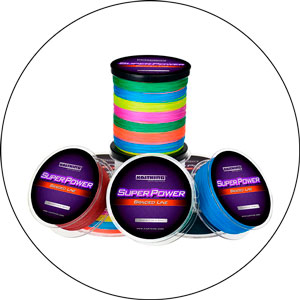
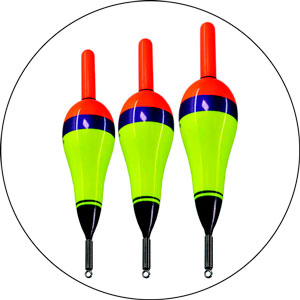
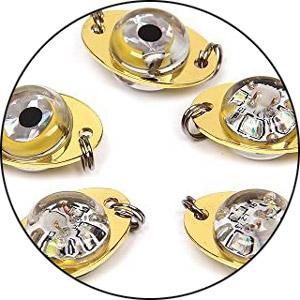
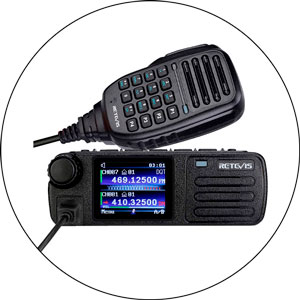
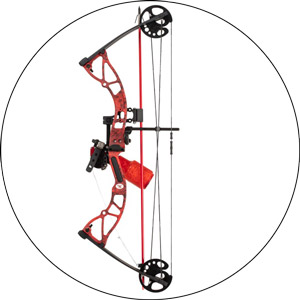
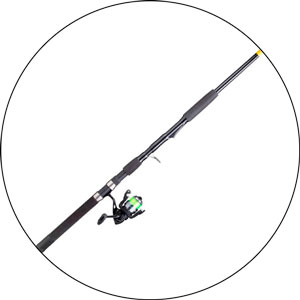
Great article on the history of fishing lines! I found it very informative and well-written. I particularly enjoyed learning about the evolution of fishing line materials and the impact they have had on the sport.
It’s very interesting to know how the fishing line goes through a lot of change, as with technological advancements, the fishing line materials have also evolved.
A good read for any fishing enthusiast or anyone looking to learn more about the history of this popular pastime. Keep up the good work!
I really appreciate the research and detail that went into this article on the history of fishing lines. It’s fascinating to see how different materials have evolved over time and how they’ve impacted the sport of fishing.
Interesting read about the evolution of fishing line technology. It’s amazing to see how far we’ve come from natural fibers to modern synthetic materials.
I found the section on the development of braided fishing lines particularly fascinating. It’s amazing how much stronger and more durable these lines have become over the years.
I enjoyed learning about the history of fishing lines and the advancements that have been made. It’s amazing how much of an impact these changes have had on the sport of fishing.
Great article on the history of fishing lines. It’s amazing to see how far we’ve come in terms of strength and sensitivity. Definitely worth a read for any angler.